In this never before published interview, Gael Duval talks about his days at Mandrake, the Linux distro he founded, as well as his current project /e/, a Googleless phone.
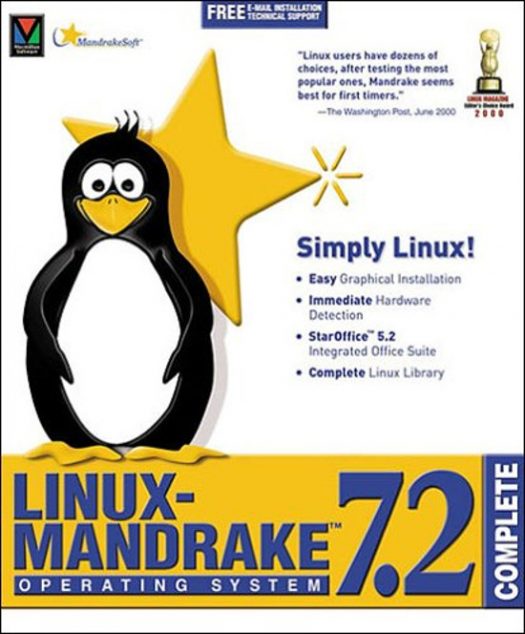
About a year ago I spent more than an hour “talking” with Gael Duval on Slack for an article that was intended for another publication. As that article ended up never being published, I decided to publish it here, because it offers an interesting glimpse at desktop Linux’s past, as well as a peek at one of the many things that might be in store for the future of mobile computing.
The under 30 set might need to know that a couple of decades ago Gael Duval was a household name in Linux circles, even if he wasn’t quite as well known as Linus Torvalds, Richard Stallman, Eric Raymond, or Bruce Perens.
Duval was the founder of what many consider to be the first user-friendly Linux distro, Mandrake, and as one of three co-founders of the French company MandrakeSoft, around the turn of the century brought the distro to something akin to rock star status among Linux users.
Before Mandrake came along, installing Linux was a tedious operation that required a bit of knowledge of the inner workings of an operating system. Keeping Linux running even after it was installed wasn’t for the faint of heart either, and required manually manipulating configuration files from the command line, managing file permissions, and the like. Mandrake sought to change all that and make Linux an operating that anyone could use.
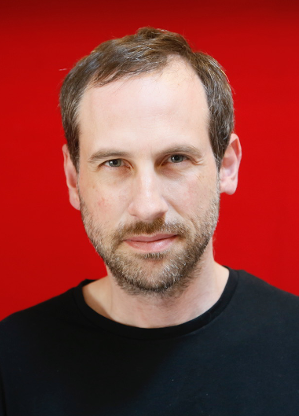
Like many techies who came of age in the last decade of the 20th century, Duval said he cut his programming teeth in the 1980s, on machines that would now be archaic.
“The 80s have been the most exciting period in computing so far, in my opinion,” he said. “Well, I can’t talk about the 60s and 70s period.”
His first computer was a Laser 200, an early 8-bit home computer built by VTech and marketed from 1983 through 1985 under several different names. Like many machines from the period, it ran programs, mainly games, from cassettes.
“It could be programmed in BASIC, nothing else, and as I didn’t have a tape recorder to plug into it, everything I did was lost when I switched the power off,” he said. “You had to like it to continue using it.”
By the time he entered the University of Caen Normandy in the early 1990s, he had gone through a litany of computers and languages. On an Amstrad PC1512, an early “IBM compatable,” he became acquainted with MS-DOS (“I think I started to dislike Microsoft at this time”), and later with Windows 3.1 (“it was awful, buggy…”).
Around 1995, while still a university student, he discovered Linux and was able to download a copy — an impossible task for most home users stuck on dial-up at the time — using the university’s system.
“I don’t remember exactly the year, but I came to discover that there was a UNIX you could install on a 386 machine,” he said. “So I found and bought a used 386 motherboard from a student, found 8MB of RAM, and replaced my 286 motherboard. I bought 50 floppy disks and downloaded my first Slackware at the Uni. Back home in the evening, I got X11 and the OPEN LOOK window manager — or AfterStep, not really sure — running on my PC.”
From there, he was off and running with Linux and open source. He found and installed a 14.4kbps modem (“Super slow, but I was in my room at home and could access my email”), created a Linux Users Group, and participated at some local events.
“In 1997, I discovered Red Hat,” he said. “Red Hat was interesting because they cared a little more about the user and they offered a package manager. I liked early Red Hat distros. And there was the ‘source CD,’ with absolutely everything needed to rebuild any app and even the system. At the same time, I discovered KDE and started to contribute to the project, test it, suggest ideas etc.”
As almost anyone who’s learned a bit of Linux history already knows, those two discoveries eventually led to the creation of Mandrake, which at first was based on Red Hat and featured the KDE desktop by default.
“In late ’97, I started to have this idea to build a new Linux distribution, more ‘desktop-oriented,'” Duval explained. “I first called it NetOS, and the funny thing is that I even started a web page for it and it still exists. I don’t know exactly how I came to the ‘Mandrake’ name later. I just remember I wanted to find a name with a ‘K’ letter, because of KDE, and something special. NetOS would have been too neutral. I admire Red Hat’s name. It’s really singular. It’s a great idea.”
According to Duval, Mandrake’s first release was pretty much a one man show.
“I had several contacts though, at KDE mostly, and in the free software community,” he said. “They helped me to find server hosting, because 600mb of data was a lot of data at this time. I released the first Mandrake as a one-person project. Actually, we did hire our first developer in early ’99 if I remember correctly. I got some community help earlier though.”
The first release, Mandrake 5.1, became available for download from two FTP servers in July 1998. That the distro included KDE 1.0 up-and-running on first boot was a big benefit for users, since most distros of the era didn’t include a preconfigured desktop environment. Also pioneering was the distro’s automounting of CDs without requiring any input from the command line.
Shortly after the first release, the distro had a bit of a firsthand experience with what was then called the “Slashdot effect.”
Back in those days the Slashdot website (or “/.” for short) was about the most common hang-out site for geeks, and the site had so many users that a mere mention of a URL on the site could greatly increase traffic to the mentioned site.
“Slashdot posted a news item about the first Mandrake release on the same day that I left for two weeks holiday where I didn’t have any internet access,” Duval remembered. “When I came back, 350 people from all over the world had written to me about Mandrake. People wanted to start a company with me; people offered to support the project with hardware. It was incredible.”
The Slashdot article also prompted an email from Red Hat’s lawyers.
“It wasn’t unfriendly,” Duval said. “They were just telling me what I could and could not do. They wanted to protect the Red Hat trademark. I didn’t have the right to let people think Mandrake was a Red Hat product, which was absolutely perfect.”
For a couple of years after that, it was all uphill for Mandrake. Duval learned to use Adobe Illustrator to produce users’ manuals that were included in Mandrake’s shrink wrapped retail offering of install CDs, called Powerpack, which became popular not only because it offered an accessible way for users with slow internet connections to get Linux up and running, but also because the discs included over two thousand applications. It also didn’t hurt that in the summer of ’99, the popular LinuxWorld website gave the distribution “LinuxWorld Awards” for Best Linux Distro as well as Best Server Distro.
In 1999 and 2000 the distro, under the company name MandrakeSoft, hired about 150 people and moved away from being primarily a Red Hat clone. The distro also began to ship with its own homegrown graphical installer and configuration tools. Although KDE remained its default desktop environment, GNOME and other DEs were included as options during installation.
At first the company made money by selling CDs, which were available online through the MandrakeStore and in retail outlets (in the U.S. through an arrangement with the MacMillan publishing house). When the shrink-wrapped business began to decline, mostly due to the rise of broadband which made downloading entire operating systems feasible, some within the company found the business-to-business model attractive.
“We did that with limited success,” Duval remembered, “probably because Red Hat and SUSE were more advanced in this area. Red Hat has always been positioned on server business.”
Another avenue that Mandrake tried was Mandrake Club, a community subscription service that was launched in November of 2001. Under this plan, user’s paid monthly membership dues, starting at about $20, for access to software in the company’s repository. Duval said he thought the club was “a great idea.”
“It was not my idea, but I supported it a lot,” he said, noting that at one point it had 20,000 paying members. “The concept was good; we should have raised it to a higher level.”
The club model was not without controversy. Some users claimed it inappropriate that an open source company was attempting to profit from the community. It also didn’t help when downloads for Sun’s proprietary Star Office, the predecessor to OpenOffice, were only made available to users with memberships at “silver” level and above, and not for those holding basic level memberships.
“Did the community club model ever pay off?” I asked, typing the question into Slack.
“Twenty thousand subscribers, that generates an income,” he replied, adding a smiley face emoji.
Despite the newfound income from the subscription service and the limited success the distro was having with its server business, the company was loosing money as the income from shrink wrapped software continued to decline. In early 2003 the France-based company filed for the French equivalent of Chapter 11 bankruptcy protection,.
“I don’t remember all of this period well,” Duval said. “It was quite a troubled period, because it was harder to raise money at this time because there wasn’t enough business. We had to fire many people. It was tough for everybody, and it never really stopped.”
By this time, Duval’s influence over the distro he’d originally launched as a one man show had been on the wane for several years, beginning with the formation of MandrakeSoft as a business developing the distro.
“I had a minor part of the company from the early beginnings because it was very difficult for me to find money for my part,” he explained. “It’s OK, but this explains why I lost formal control rapidly. I had influence as the founder — initial founder — and this explains why I was fired in 2006.”
The company emerged from bankruptcy in early 2004, ahead of schedule. Less than a year later, in February 2005, the distro was on a firm enough footing to spend $2.3 million purchasing Connectiva, a popular Brazil-based desktop and server distribution with 60 employees that had an installed base that included the Brazilian military, public schools, and major businesses including HSBC. Connectiva also developed appliance and single-purpose Linux software, such as ATM machine interfaces, and had an annual income at the time of the sale of around $2.2 million.
“Business was OK; costs were low,” Duval said. “We had new projects at this time. For instance, I started Mandrake Move, which was a version of Mandrake you could run from a CD and sync your data on a USB stick. It was quite successful and later went fully to a USB stick implementation.”
Less than a month after the Connectiva acquisition, the Mandrake distro and MandrakeSoft company name were changed to Mandriva. While the name change reflected the purchase of the Brazilian Linux developer, it was necessitated by a trademark dispute MandrakSoft lost with King Features Syndicate, part of the Hearst publishing empire, which owned the rights to the Mandrake the Magician comic strip.
“When we changed names there were some mistakes,” Duval explained. “For instance, the Mandrake domain names routed to the new Mandriva domain names and we lost a big part of our natural traffic.”
Compounding Mandrake’s, now Mandriva’s, problems was the rise of Ubuntu, which issued it’s first release in late 2004 and was offering to mail installation CDs anywhere in the world free of charge.
“It was difficult for us, because we still had a business selling CDs, packs, etc.,” he said. “Then Ubuntu came and said ‘you can order your free Ubuntu CD online.'”
Then, in March, 2006, a year after the name change, Duval was suddenly fired without warning.
News of the firing was first leaked on the Mandriva forums, which Duval soon confirmed on his personal website. Very little information was ever publicly offered, with Mandriva’s CEO, Francois Bancilhon, saying the distro’s founder was included in layoffs that were necessitated by indicators in the company’s Q1 2005-2006 report.
“Gael is part of the positions in the company we have chosen to eliminate,” he told the NewsForge website. “Gael has brought a lot to this company and has been all along a very strong contributor. I am very sorry to see him leave, together with other employees that have worked hard and done their best for Mandriva. We are just at a stage where we need to make difficult decision to improve the company status.”
According to Duval, the firing took place by way of a phone call from CEO Bancilhon, who told him, “We’re firing a bunch of people again. You’re on the boat.”
“Probably, there are many things I don’t know myself about the story,” Duval added.
Mandriva took something of a publicity hit over the firing of it’s original founder. Duval had become a popular figure, not only among Mandrake/Mandriva users, but in the general Linux and open source community as well. Almost immediately, Mandriva community members began complaining about a lack of transparency around the action.
“I warned internally that my leaving would probably hurt the company in some way,” Duval said, “but they were totally dumb about this.”
Duval remembers that at the time he had mixed feelings about being fired. On the negative side, this meant he was going to have to seek employment. He was also concerned that as a Mandriva shareholder he was going to see the value of his stock decline — which it did. However, leaving Mandriva was also something of a relief.
“I was pleased because I could start something new,” he said. “I didn’t recognize myself a lot anymore in the Mandriva organization.”
After Mandriva, Duval started Ulteo, which offered an open source virtual desktop solution.
“We developed a fork of Ubuntu that was deeply modified,” he explained. “It could update automatically from update servers. The OS was structured with different ‘layers’ that we could update independently, and we had the ‘connected desktop’ [KDE], which was running in the cloud as an instance that you could use in your browser. All your data was synchronized, like NextCloud or DropBox can do.”
Duval served as president and CTO at Ulteo until funding issues forced the doors shut in 2014.
“We had a good traction,” he said. “By the end of 2007 we had 80,000 users who had opened accounts, but we needed to raise money. VC funds were very excited by the project, but they told us ‘it’s very, very ambitious; you need $80 million to develop this project and we cannot do that. On the other hand, if you develop this for business-to-business, like a Citrix alternative, we can invest because it will need far less money.’
“So we pivoted, restarted most of the R&D, and VCs didn’t invest.”

These days Duval is working on a phone project that was originally called eelo but now goes by the name /e/, the name change being necessary because it turned out that there was a Netherlands-based company with a similar name — EELLOO.
Duval said the phone project began because of his concerns about privacy issues and mobile technology, especially issues centering around Google.
“I felt jailed again, like I felt jailed with Windows in the 90s,” he said. “Thus I started to work on a possible alternative and I discovered LineageOS, which is an Android fork. For the first time, I started to flash some smartphone devices. It’s been like a rebirth for me, the same feeling as with my first hacks when I started Mandrake.”
Community support for the project came quickly. In December, 2017 he launched /e/ with a fund-raising campaign on Kickstarter which raised over $110,000 dollars, which allowed him to quickly have a prototype fork of LineageOS up and running.
When I spoke with Duval a year ago the project was in it’s infancy. It had created a new launcher and was in the process of modifying some settings. His team was “hacking” the installation procedure and integrating OnlyOffice for email and the like. Most importantly, “all Google stuff” had been removed and the operating system was already able to run without the proprietary Google services API’s and applications that even many open source apps require in order to run on Android.
It’s been uphill for /e/ since then. Another fundraiser, this time on Indiegogo, raised $121,744 from 1,586 backers, and the project continues to raise money on its website. More funding is coming from a Patreon account, which currently has 61 patrons pledging $495 monthly. The project, now operating under the name /e/ Foundation, currently has a team of over 40 people, including employees, regular contributors, and occasional contributers, working on the project.
At this point it appears as if the phone is ready for it’s prime time launch. According to the project’s website, the OS can now be installed on over 80 different devices.
By default, the phone now comes with at least 17 apps preinstalled by default — with none of them being Google apps that are normally pre-installed in Android. Included in the mix: a calendar and task manager that can be configured to function together, a maps app that’s intended as a replacement for Google Maps, an email client forked from K-9 Mail, and an app for recording screen and voice.
In addition, the /e/ Foundation has started a program that lets users who are afraid of flashing their mobile devices mail-in their phones — the foundation will get them up and running with /e/ and ship them back. /e/ users also receive 5GB of storage for emails, pictures, documents, and the like for free, with a 20 GB plan for early adopters priced at 99€.
Perhaps the biggest news is that the /e/ app store, which will include only vetted, Googleless, and free apps, is getting ready to go public soon. When I asked Duval on Twitter the other day if the app store was a reality yet, he replied, “Yes, but not public yet. Will be released next week or the week after.”
Christine Hall has been a journalist since 1971. In 2001, she began writing a weekly consumer computer column and started covering Linux and FOSS in 2002 after making the switch to GNU/Linux. Follow her on Twitter: @BrideOfLinux





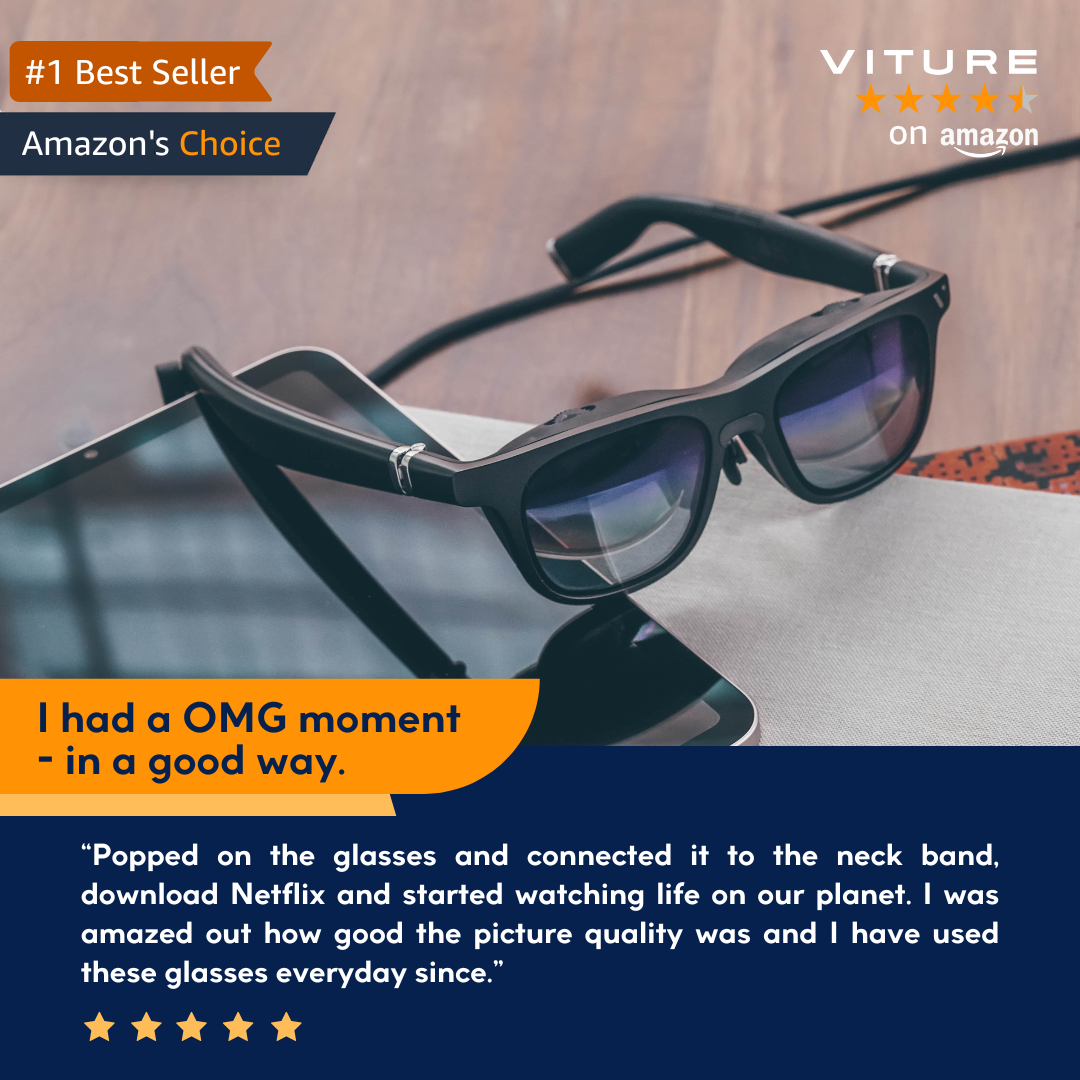
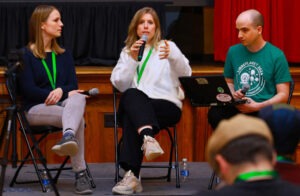
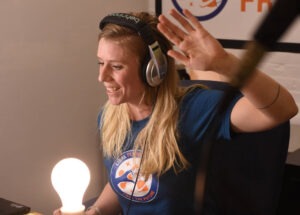
I took a look at /e/ a few months back. It seems promising, but I don’t think the sort of person who reads FOSS Force is really the audience for it; I didn’t see much benefit to it over installing LineageOS and the upstream apps that /e/’s suite is forked from.
In particular I’m not sure about the Magic Earth map app; unlike the rest of the apps in the suite, it’s proprietary, and while I suppose it’s bound to be less invasive than Google Maps just by default, we don’t have any evidence that it respects user privacy beyond the publisher’s assurances that it does.
Adding: It took me a half-dozen screens worth of Captchas to post this comment; is there perhaps a better solution than Google’s reCaptcha?
> I didn’t see much benefit to it over installing LineageOS > and the upstream apps that /e/’s suite is forked from.
This is really a matter of different audience. Think Ubuntu vs Debian.
However, LineageOS has not any focus on privacy (they have Google as default search engine etc.)
Also worth a read on this topic:
https://gitlab.e.foundation/e/wiki/en/wikis/faq
I’m intrigued by some of these attempts to provide an open source operating system for mobile devices, but whenever I delve into the details I am disappointed by the inevitable ‘use this binary kernel from your manufacturer’.
You can’t realistically claim an OS is open source if the FUNDAMENTAL underpinnings are giant binary blobs on backdoored hardware, controlled by the very corporations you are trying to protect your data from.
It’d be like if Microsoft open sourced Calculator and…oh wait.
Another issue are the countless cloud service connections.
Hear me: I DON’T want to opt-out of data collection. The default communication with cloud services should be: NONE. I want to OPT-IN to a fined grained set of MINIMAL services. The default needs to block all communications by default except for USER WHITE-LISTED protocols/apps/destinations. Anything else is untrustworthy. THAT would be a true Debian vs Ubuntu comparison.
Open source tools and apps are great and I applaud people actually working on such, but I get ticked off when I see a lot of ‘open source’ claims tossed around for systems that rely on CLOSED foundations and the makers of the said claims grow curiously silent when pressed for details. The closed portions may not be their fault, but their claims are misleading nonetheless.
Better to start with a truly open foundation and build upward. Nothing else deserves our trust.
This was a great read, and it really took me back. I have fond memories of my time running Linux Mandrake in the late 90s/early 2000s. Thank you for publishing it.
@Stephan:
> This is really a matter of different audience.
…did you seriously just quote the second half of a single sentence of my post and then respond by repeating what I said in the first half of that same sentence?
Nah, I’d never do business with him again after the StarOffice debacle. I was promised I’d get it as a member, which is why I bought in… Only to be screwed out of it when he made it minimum of Silver level. I fought and argued, and insisted I get what I was promised I’d paid for, only for them to force a refund on me I didn’t want. I wanted StarOffice, as promised. I get it, he made a mistake promising something cheaper than Sun ended up allowing him to sell it for. But that was HIS problem, not ours. He chose to screw us rather than pay up for his mistake. Not a characteristic any customer should want. Avoid him and his businesses like the plague.
I really enjoyed reading this article. Mandrake was my first distro. Then Mepis and on and on. Thanks for the memories. My first comptuer was an Otrona Attache – it was state of the art in the mid 80s. I ran Mandrake on a 286 box of some kind.
@Mike, you probably know about this but just in case, have you checked the Librem 5?
https://puri.sm/products/librem-5/